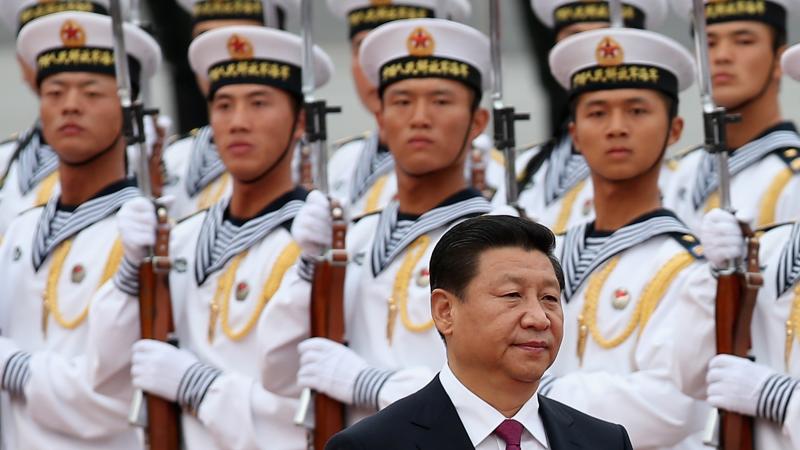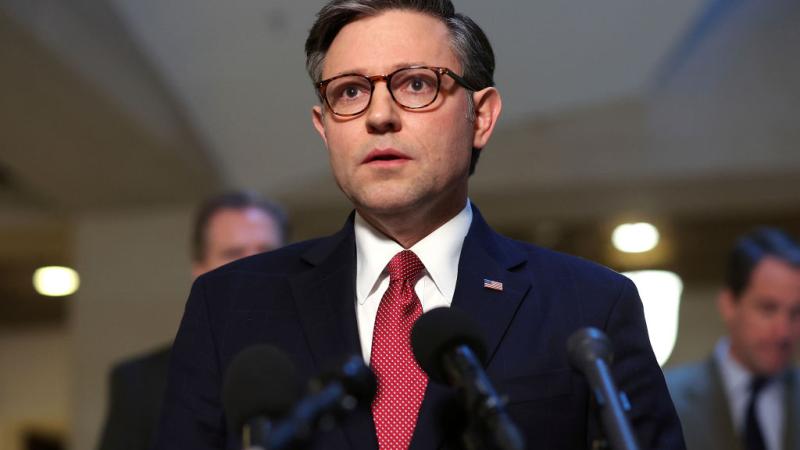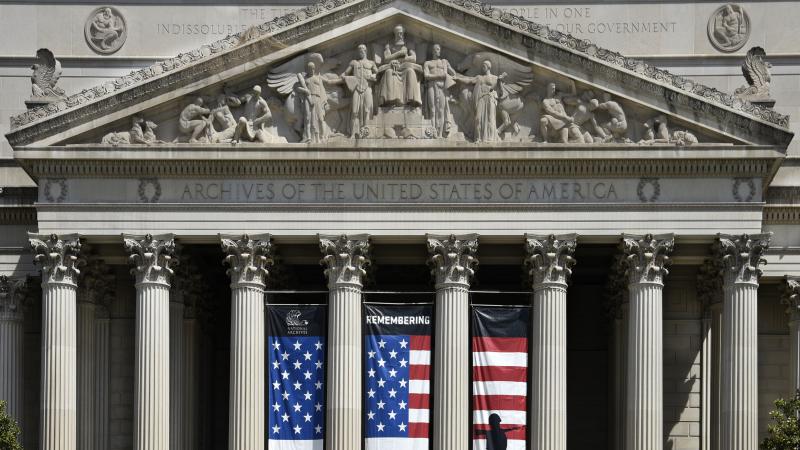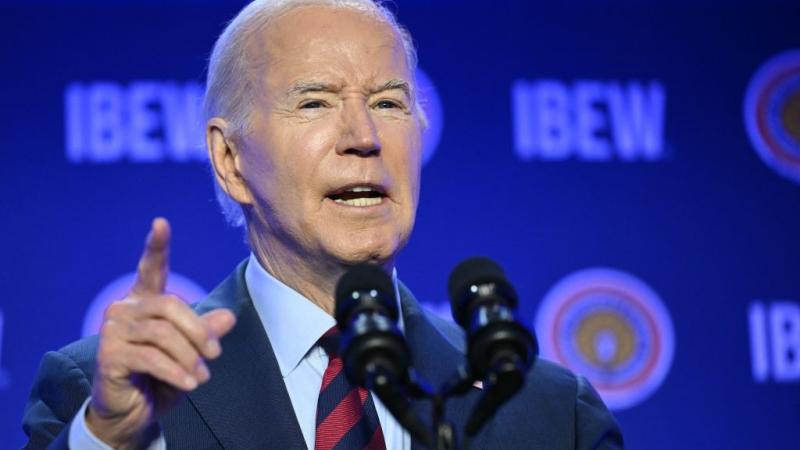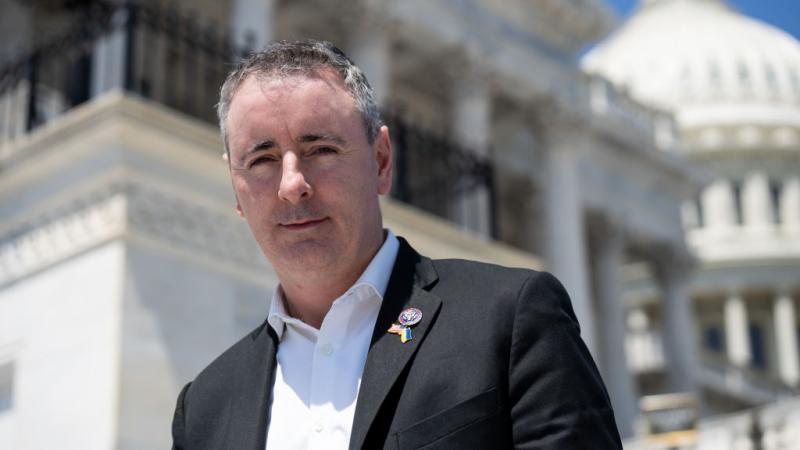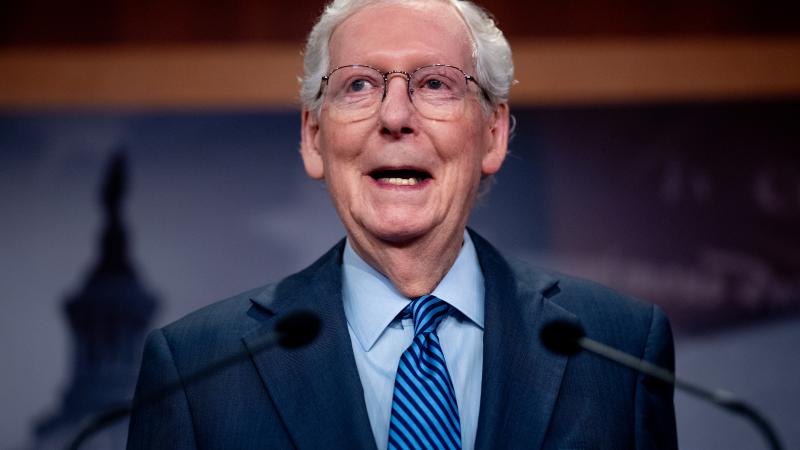U.S. touts new project to bolster Tajik-Afghan border, as Biden abandons U.S. border wall
U.S. spending millions in taxpayer dollars to build Border Guard facilities for former Soviet republic of Tajikistan to guard against expected wave of refugees fleeing Taliban rule in Afghanistan.
While the Biden administration halted construction of the border wall along the U.S.-Mexico border, the United States is funding border security efforts for Tajikistan, a former Soviet republic trying to keep Afghan insurgents and refugees out.
One day after the Biden administration's Aug. 31 deadline to withdraw from Afghanistan, the U.S. Embassy in Dushanbe, Tajikistan, announced that it had launched a project to construct new facilities for a Border Guard Detachment in Ayvoj, along the Tajik-Afghan-Uzbek border.
That facility is designed to help Tajik security forces better respond to Afghans seeking to flee Taliban rule or insurgents seeking to cause mischief to its neighbor.
While the announcement was largely overlooked by the U.S. media, Rep. Paul Gosar (R-Ariz.) warned in August that it was "preposterous" for American tax dollars to be spent securing a foreign country's border while the U.S. southern border remained wide open.
Last month, nearly 209,000 illegal aliens crossed the U.S. southern border, a two-decade high and four times higher than the last August of the Trump administration, which had tightened border security.
"So we are clear: your tax money is spent building a wall and securing the border in Tajikistan and hydro-power in Afghanistan, but our borders are open and the last large hydro power plant built by Army Corp of Engineers in U.S. was in 1979," Gosar said.
Tajikistan shares an 835-mile border with Afghanistan — less than the 1,254 miles of border shared between Texas and Mexico and less than half the 1,954-mile distance of the entire U.S.-Mexico border.
A new detachment facility in Ayvoj, Tajikistan will replace an outdated facility and allow the Border Guard Service to deploy forces more quickly to border areas in response to threats posed by the Taliban's takeover.
The new facility will also provide housing for Border Guard personnel and their family members, U.S. officials said.
Tajikistan is still a member of the post-Soviet, Moscow-led Collective Security Treaty Organization (CTSO) alliance, Reuters reports.
"The United States and Tajikistan enjoy strong security cooperation, and this border detachment project is just another example of our shared commitment to the security and sovereignty of Tajikistan and Central Asia," said U.S. Ambassador to Tajikistan John Mark Pommersheim.
Since 2002, the U.S. government has provided over $300 million in security-sector assistance to Tajikistan. U.S. taxpayers have also footed the bill to renovate or rebuild 12 border outposts, nine border checkpoint facilities, and three training centers for Tajik border guards to help combat security threats, the embassy disclosed.
One month before the U.S. withdrawal of Afghanistan, Tajikistan said it could only take roughly 100,000 Afghan refugees — knowing ahead of time that they would be coming.
"Tajikistan does not have the capacity to accommodate a large number of refugees and asylum seekers," Interior Minister Ramazon Rakhimzoda said in July, according to a report by Reuters.
Similar concerns were also expressed by other European countries that beefed up their border efforts, including Greece and Hungary.
Meanwhile, in Texas, state taxpayers are left footing another bill: $1.8 billion allocated by the Texas legislature to finish the U.S. border wall on Texas soil begun under the Trump administration.
The Texas Facilities Commission earlier this month selected a program manager to oversee the wall's construction: Michael Baker International, Inc., a Pennsylvania engineering firm, and the Dallas-based design firm, Huitt-Zollars.
The contract is expected to be awarded any day. Both firms have helped complete hundreds of miles of border wall projects for the federal government. It's the first time any entity would be contracted with a state government to install a border wall.
Legislation recently signed into law by Texas Gov. Greg Abbott allocates funding for border security.
Instead of the U.S. government sending troops to secure the border, the Texans are paying an initial $301 million towards salaries and costs for 1,800 National Guardsmen and women, roughly 11 battalions, to install fencing with trespassing signs, and later work on the wall construction or another barrier.
A Washington Examiner analysis indicates only 150 miles of the 1,250 mile border has a substantive barrier, leaving 1,100 miles left for Texas to secure.
But the purpose of the border wall is not to cover the entire 1,254 miles of Texas, or the entire southern border separating the U.S. from Mexico.
Brandon Judd, president of the National Border Patrol Council, has explained the purpose of the wall is to provide controlled points of entry at different checkpoints along the border. This has proven to be an effective strategy to allow Border Patrol agents to manage the flow of immigration and patrol the field to deter criminal activity.
Texas has identified slightly more than 700 miles of land where barriers, fences and the wall can be constructed. The Texas National Guard has already begun erecting an 8-foot-high chain-link fence in some sectors.



